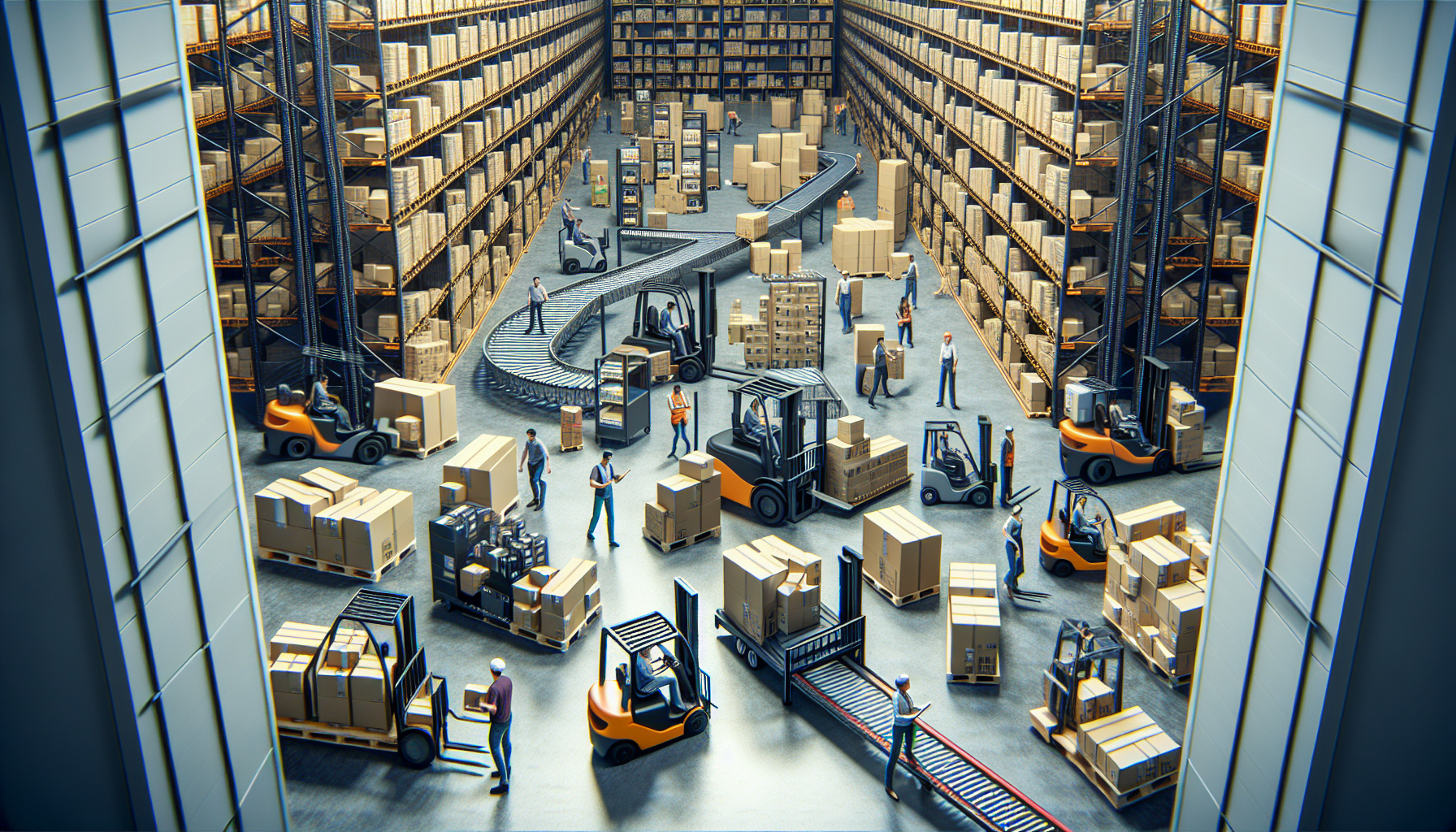Material handling equipment plays a crucial role in optimizing the efficiency and productivity of warehouse operations. From forklifts to conveyors to automated picking systems, these equipment ensure smooth flow of goods and materials within the supply chain. In this article, we will explore the importance of material handling equipment in enhancing supply chain efficiency. So, let’s dive in!
Improved Productivity
One of the primary benefits of utilizing proper material handling equipment is the significant improvement in productivity. By using equipment such as pallet jacks, order pickers, and conveyor systems, warehouse operations can streamline processes and reduce manual labor. This leads to faster and more efficient movement of goods, resulting in higher productivity levels.
For example, using a forklift to move heavy pallets or utilizing an automated guided vehicle (AGV) for transporting materials can eliminate the need for manual lifting, reducing the risk of injuries and fatigue among workers. This not only saves time but also allows employees to focus on more value-added tasks, ultimately increasing overall productivity.
Enhanced Safety
Safety is a paramount concern in warehouse operations, and material handling equipment plays a vital role in ensuring a safe working environment. Equipment such as scissor lifts, dock levelers, and safety barriers help reduce the risk of accidents and injuries.
Using material handling equipment like ergonomic lifting aids or powered industrial trucks helps prevent musculoskeletal disorders and lowers the chances of workplace accidents. By minimizing the reliance on manual labor and implementing automated systems, warehouses can create a safer environment for their employees, reducing the number of work-related injuries and illnesses.
Furthermore, modern material handling equipment is equipped with advanced safety features such as sensors, alarms, and collision avoidance systems. These features help prevent collisions, falls, and other potential hazards, promoting a safer working environment.
Optimized Space Utilization
Efficient utilization of warehouse space is essential for maximizing storage capacity and overall operational efficiency. Material handling equipment plays a critical role in optimizing space utilization within warehouses.
Equipment like vertical lift modules (VLMs) and automated storage and retrieval systems (AS/RS) can effectively utilize vertical space, allowing for higher storage density. By integrating these systems, warehouses can store more goods in a smaller footprint, reducing the need for additional storage space or expanding the facility.
In addition, equipment such as pallet racking systems and mezzanine floors provide efficient storage solutions for different types of goods and materials. By organizing and maximizing the use of floor space, warehouses can streamline processes and improve accessibility to products, enhancing overall operational efficiency.
Improved Inventory Management
Material handling equipment also significantly contributes to improving inventory management within warehouses. With the help of advanced equipment and technologies, warehouses can better track, monitor, and manage inventory.
For instance, RFID (Radio Frequency Identification) technology integrated with material handling equipment provides real-time visibility of inventory as it moves throughout the supply chain. This enables warehouse managers to accurately track stock levels, reduce stockouts, and improve order fulfillment accuracy.
Furthermore, equipment like automated picking systems and sortation systems enable faster and more accurate order picking and sorting processes. This reduces the chances of errors and delays, ensuring that the right products are picked, packed, and shipped to customers in a timely manner.
Cost-Effectiveness
Implementing the right material handling equipment can lead to significant cost savings in warehouse operations. By improving efficiency, reducing labor costs, and minimizing errors, businesses can achieve better cost-effectiveness.
For example, investing in automated conveyor systems or robotic palletizers can eliminate the need for excessive manual labor, reducing labor costs over the long term. Additionally, optimizing space utilization through the use of efficient storage systems can help avoid unnecessary expenses associated with expanding warehouse facilities or investing in off-site storage.
Moreover, by improving inventory management and order fulfillment processes, businesses can reduce costs related to stockouts, order errors, and customer dissatisfaction. This can lead to higher customer satisfaction, repeat business, and increased profitability in the long run.
In conclusion, material handling equipment plays a vital role in enhancing supply chain efficiency. From improving productivity and safety to optimizing space utilization and inventory management, these equipment have a significant impact on warehouse operations. Investing in the right material handling equipment can lead to higher efficiency, cost savings, and improved customer satisfaction. To learn more about material handling equipment management and optimization, visit HCO Innovations.

